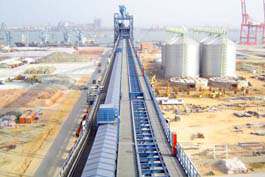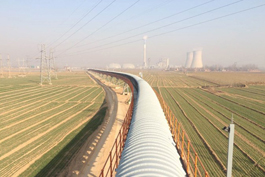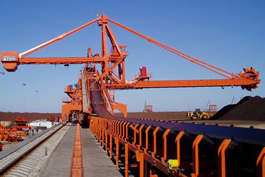Sidewall belt conveyor is a kind of equipment that can transport bulk materials at a large tilt angle or vertically. As an efficient continuous conveyor, sidewall belt conveyor is widely used in the field of conveying bulk materials. Through its unique structural design, it can realize large inclination angle or even vertical transmission, breaking through the limitation of traditional belt conveyor transmission angle.
Wavy rib conveyor belt: This is the core component, composed of baseband, wavy rib and transverse partition. The baseband is responsible for carrying and transmitting the material, the wavy retaining edge is like a "Wall" To prevent the material from slipping off during the conveying process, and the transverse partition further enhances the bearing capacity of the material, especially in the large angle conveying, which can separate the material into a small unit to ensure stable conveying. For example, in coal transportation, wavy guards and transverse partitions can effectively prevent coal from tumbling and ensure transportation efficiency.
So how do we choose our own wavy conveyor belt? Here are some wavy conveyor belt selection skills:
Material characteristics: It is necessary to consider the particle size, shape, density, grinding and chemical properties of the material. For materials with large size and strong grinding and polishing, such as ore, the conveyor belt with high strength and good wear resistance should be selected. Like the steel wire rope conveyor belt, the steel wire rope core inside provides strong tensile strength, can withstand large material impact, and the surface is covered with thick rubber, which can effectively resist wear; for high-density materials, it is necessary to ensure that the belt has sufficient carrying capacity to prevent belt breakage during the conveying process.
Sidewall belt conveyor throughput: The width and running speed of the belt are determined according to the expected throughput. The larger the throughput, the larger the required belt width is usually, so as to ensure that the material has enough conveying area. At the same time, a higher throughput may require a higher running speed, but too high a speed will increase the wear and energy consumption of the belt, and may also cause the material to fall during the conveying process, so find a balance between the two. Generally, the required belt width can be calculated by the formula, and then adjusted according to the actual working conditions.
Conveying distance: Conveying distance is longer, the belt will bear greater tension, at this time should be selected with high tensile strength belt, in order to avoid tensile deformation or even fracture in the long distance conveying process. For example, fabric core conveyor belts are widely used in short distance transportation, but for long distance transportation, its strength may be insufficient, and it is necessary to choose wire rope core conveyor belts. In addition, it is also necessary to consider the bending and inclination of the conveyor line, for the conveyor with a inclined angle, it is necessary to choose a belt with the appropriate height of the guard and partition to prevent the material from sliding.
Working environment: If the working environment is humid and corrosive media, belts with good water and corrosion resistance should be selected, such as conveyor belts made of special rubber materials; in a high temperature environment, it is necessary to choose a high temperature resistant belt, such as a heat-resistant rubber conveyor belt, to ensure that the performance of the belt is stable under high temperature conditions, and there will be no aging, deformation and other problems due to high temperature.
Matching with equipment: The selection of belt also needs to be matched with the driving device, roller, roller and other parts of the conveyor. For example, the width of the belt should be matched with the width of the drum to ensure that the belt does not run off during operation; the tension of the belt should match the power of the driving device to avoid skidding or overload.


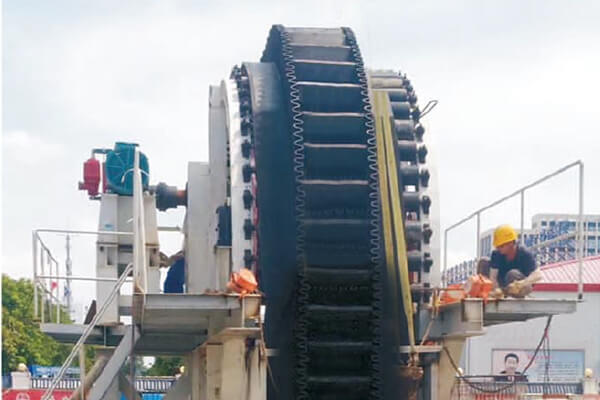
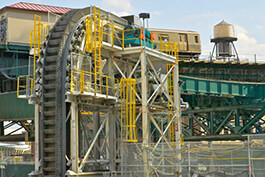
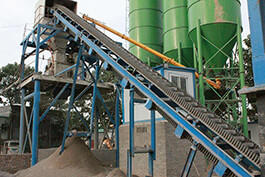
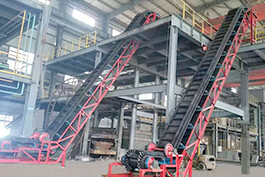
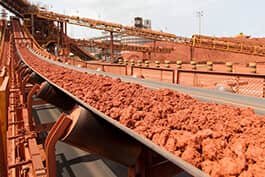
.jpg)
